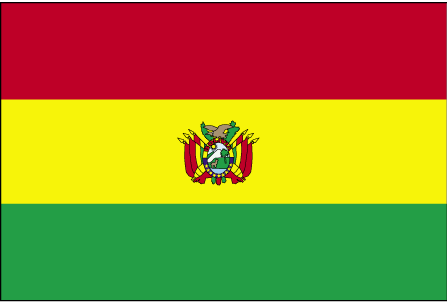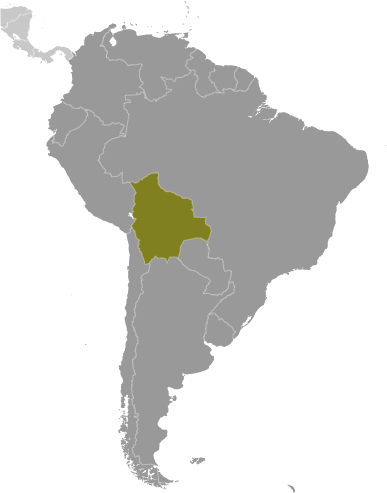
|
|
Advertisements:
People And SocietyNationality
Noun Bolivian(s)
Adjective Bolivian Ethnic groups
Quechua 30%, mestizo (mixed white and Amerindian ancestry) 30%, Aymara 25%, white 15% Languages
Spanish (official) 60.7%, Quechua (official) 21.2%, Aymara (official) 14.6%, foreign languages 2.4%, other 1.2% (2001 census) Religions
Roman Catholic 95%, Protestant (Evangelical Methodist) 5% Population World Ranking: 83
10,290,003 (July 2012 est.)
Age structure
0-14 years
34.6% (male 1,785,453/female 1,719,173) 15-64 years 60.7% (male 3,014,419/female 3,129,942) 65 years and over 4.6% (male 207,792/female 261,904) (2011 est.) Median age
Total 22.8 years
Male 22.1 years Female 23.5 years (2012 est.) Population growth rate World Ranking: 70
1.664% (2012 est.)
Birth rate World Ranking: 64
24.24 births/1,000 population (2012 est.) Death rate World Ranking: 143
6.76 deaths/1,000 population (July 2012 est.) Net migration rate World Ranking: 148
-0.84 migrant(s)/1,000 population (2012 est.) Urbanization
Urban population 67% of total population (2010)
Rate of urbanization 2.2% annual rate of change (2010-15 est.) Major cities - population
LA PAZ (capital) 1.642 million; Santa Cruz 1.584 million; Sucre 281,000 (2009) Sex ratio
At birth 1.05 male(s)/female
Under 15 years 1.04 male(s)/female 15-64 years 0.96 male(s)/female 65 years and over 0.79 male(s)/female Total population 0.98 male(s)/female (2011 est.) Maternal mortality rate World Ranking: 59
180 deaths/100,000 live births (2008) Infant mortality rate World Ranking: 59
Total 40.94 deaths/1,000 live births
Male 44.68 deaths/1,000 live births Female 37.02 deaths/1,000 live births (2012 est.) Life expectancy at birth World Ranking: 157
Total population 67.9 years
Male 65.16 years Female 70.77 years (2012 est.) Total fertility rate World Ranking: 66
2.93 children born/woman (2012 est.) Health expenditures World Ranking: 142
4.8% of GDP (2009)
Physicians density
1.22 physicians/1,000 population (2001) Hospital bed density
1.1 beds/1,000 population (2009) Hiv/aids - adult prevalence rate World Ranking: 100
0.2% (2009 est.)
Hiv/aids - people living with hiv/aids World Ranking: 91
12,000 (2009 est.)
Hiv/aids - deaths World Ranking: 71
Fewer than 1,000 (2009 est.)
Major infectious diseases
Degree of risk High
Food or waterborne diseases Bacterial diarrhea, hepatitis A, and typhoid fever Vectorborne diseases Dengue fever, malaria, and yellow fever Water contact disease Leptospirosis (2009)Children under the age of 5 years underweight World Ranking: 90
4.3% (2008)
Education expenditures World Ranking: 25
6.3% of GDP (2006)
Literacy
Definition
Age 15 and over can read and write Total population 86.7%Male 93.1% Female 80.7% (2001 census) School life expectancy (primary to tertiary education)
Total 14 years
Male 14 years Female 14 years (2007) Unemployment, youth ages 15-24 World Ranking: 108
Total 9.2%
Male 7.3% Female 11.8% (2002)
Comments
Add a new comment: |
Advertisement
Members area
Bolivia (Sucre):
 
GPS points from Bolivia (Sucre)
|
||||||||

 Bolivia, named after independence fighter Simon BOLIVAR, broke away from Spanish rule in 1825; much of its subsequent history has consisted of a series of nearly 200 coups and countercoups. Democratic civilian rule was established in 1982, but leaders have faced difficult problems of deep-seated poverty, social unrest, and illegal drug production. In December 2005, Bolivians elected Movement Toward Socialism leader Evo MORALES president - by the widest margin of any leader since the restoration of civilian rule in 1982 - after he ran on a promise to change the country's traditional political class and empower the nation's poor, indigenous majority. However, since taking office, his controversial strategies have exacerbated racial and economic tensions between the Amerindian populations of the Andean west and the non-indigenous communities of the eastern lowlands. In December 2009, President MORALES easily won reelection, and his party took control of the legislative branch of the government, which will allow him to continue his process of change. In October 2011, the country held its first judicial elections to appoint judges to the four highest courts.
Bolivia, named after independence fighter Simon BOLIVAR, broke away from Spanish rule in 1825; much of its subsequent history has consisted of a series of nearly 200 coups and countercoups. Democratic civilian rule was established in 1982, but leaders have faced difficult problems of deep-seated poverty, social unrest, and illegal drug production. In December 2005, Bolivians elected Movement Toward Socialism leader Evo MORALES president - by the widest margin of any leader since the restoration of civilian rule in 1982 - after he ran on a promise to change the country's traditional political class and empower the nation's poor, indigenous majority. However, since taking office, his controversial strategies have exacerbated racial and economic tensions between the Amerindian populations of the Andean west and the non-indigenous communities of the eastern lowlands. In December 2009, President MORALES easily won reelection, and his party took control of the legislative branch of the government, which will allow him to continue his process of change. In October 2011, the country held its first judicial elections to appoint judges to the four highest courts.